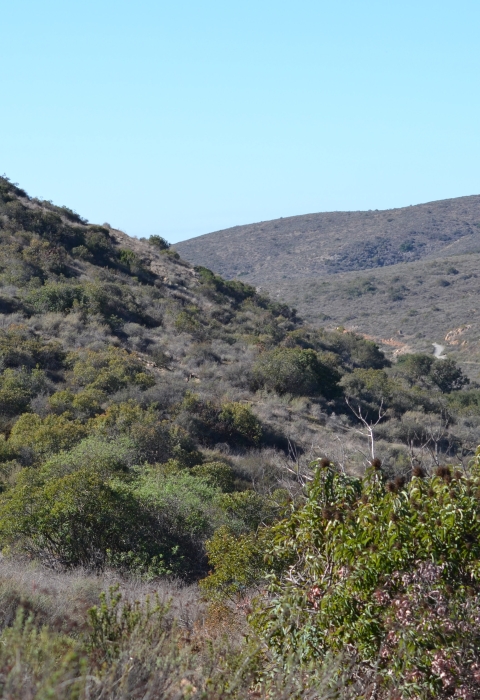| Plant Type: Annual Herb |
| Height: 2 – 10 in |
| Flower Color: Yellow |
Description
Otay tarplant is known as a self-incompatible plant. This means a particular Otay tarplant cannot be fertilized by its own pollen. Viable seeds are formed only when cross-pollination occurs from another Otay tarplant with a different genetic makeup. For long-term conservation of Otay tarplant adequate gene flow between populations must be maintained to ensure the greatest diversity of genetic material. A variety of pollen and seed dispersers play important roles in sustaining Otay tarplant. Large annual fluctuations in the number of standing plants of Otay tarplant in a given population have been documented. For example, within the San Miguel Mountain area, the number of standing plants of Otay tarplant has ranged from about 280,000 in one year to 1.9 million in another year.
Range
Otay tarplant has a narrow geographic and elevational range that is restricted to southwestern San Diego County and adjacent Baja California, Mexico. There are currently 34 extant occurrences distributed discontinuously in southwestern San Diego County, including several located on the Refuge, including the San Miguel Mountain area of the Otay Sweetwater Unit, as well as on a portion of the Jamacha parcel, located in the Sweetwater River area.
Habitat
Physical and biological features determined to be essential to the conservation of this species, include soils with a high clay content (generally greater than 25 percent) or clay intrusions or lenses that are associated with grasslands, open coastal sage scrub, or maritime succulent scrub communities between 80 and 1,000 foot (24 to 305 meter) in elevation. Much of the area with clay soils and subsoils within the historical range of Otay tarplant likely was once vegetated with native grassland, open coastal sage scrub, and maritime succulent scrub, which provided suitable habitat for Otay tarplant.
Refuge Occurrence
All of the incidental sightings of this species on the Refuge have been small occurrences. At the southwestern edge of the San Miguel Mountain area is a 67-acre (27 hectare) boot-shaped parcel, referred to as the San Miguel Ranch Otay Tarplant Preserve (also known as the Trimark parcel). From 2005 through 2010, an intensive invasive plant removal and Otay tarplant seeding program was implemented on portions of this parcel. In 2011, after completing this intensive management effort, Otay tarplant occupied about 13.4 acres of the site, the largest coverage of Otay tarplant on the site since the management effort began.



